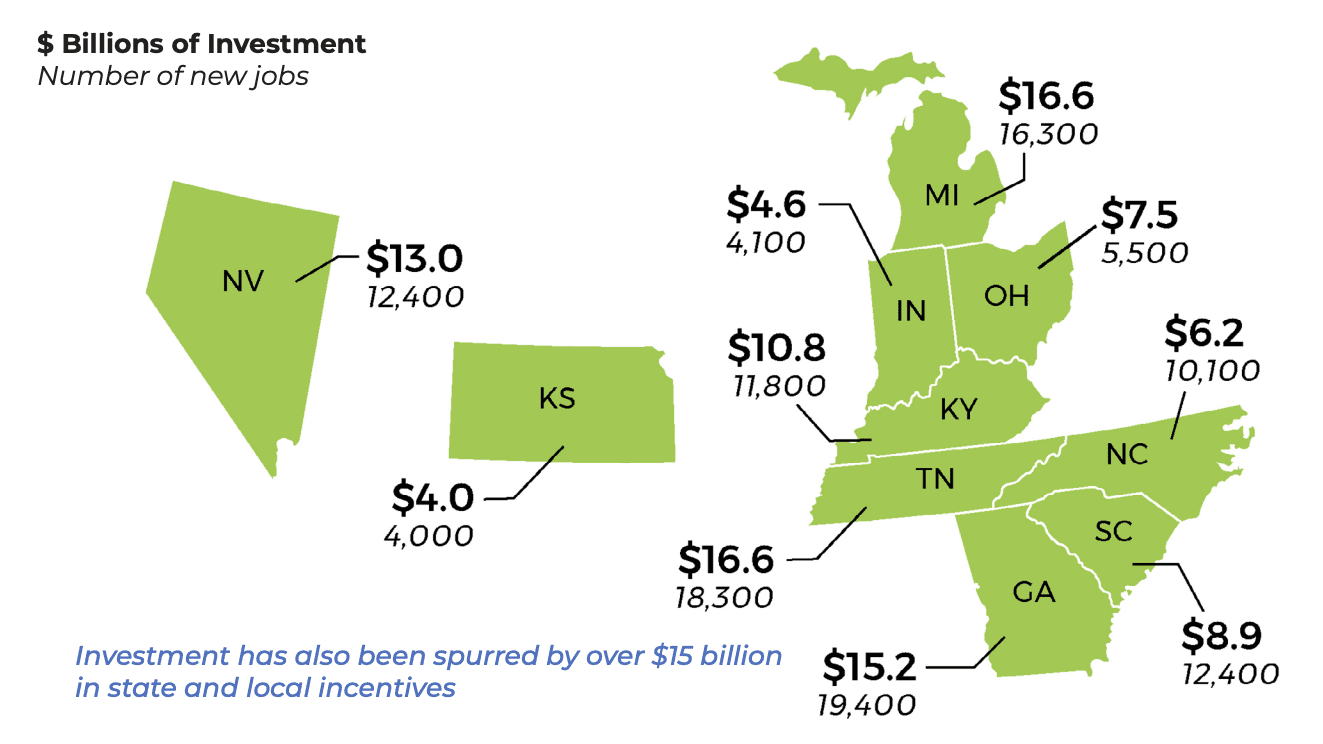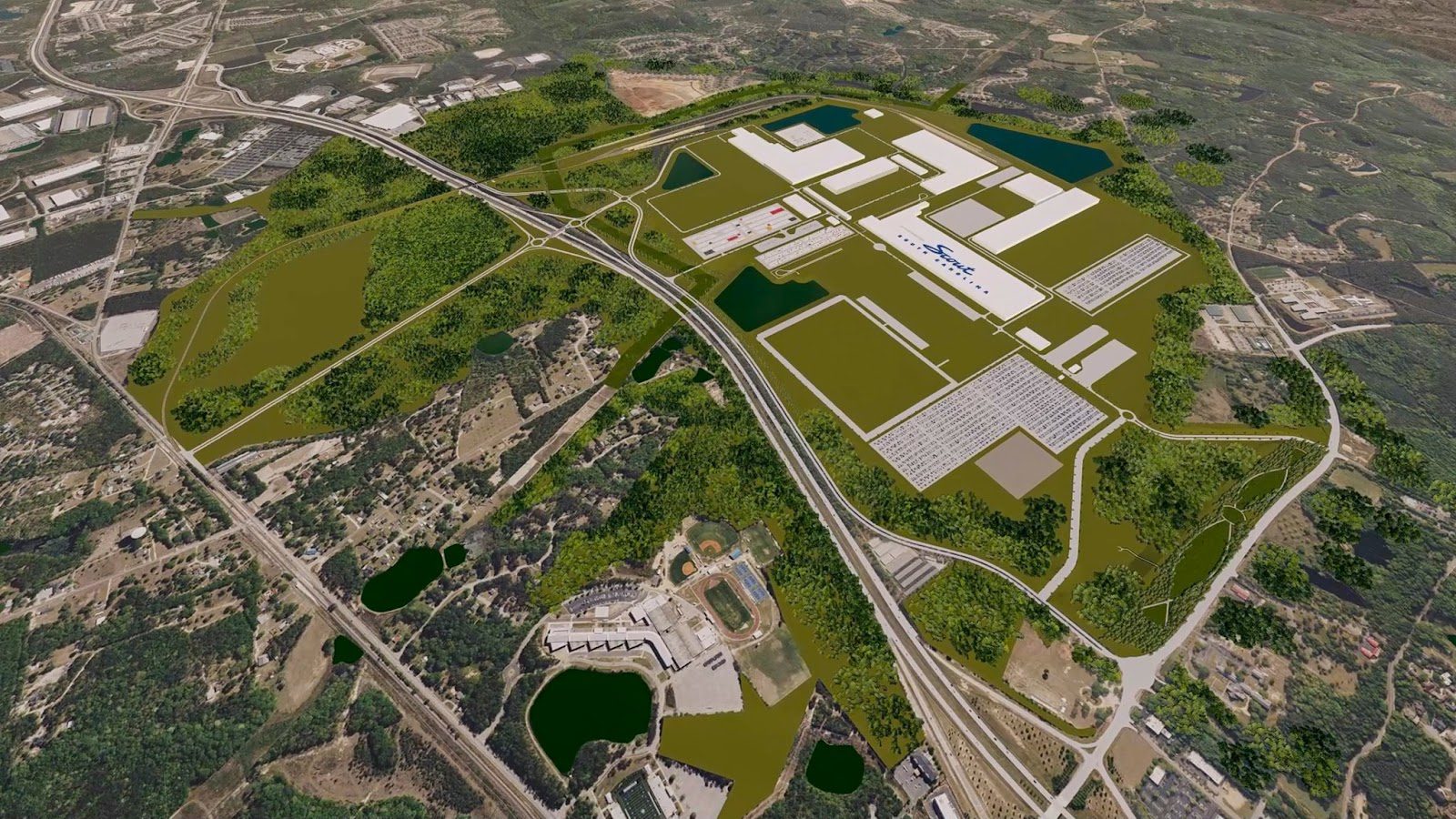The bipartisan federal Inflation Reduction Act has spurred substantial new clean energy growth. More than 100 new clean energy production facilities have been announced since the law’s passage last August — adding up to $80 billion in new investments — with many focused around the Battery Belt.
The Battery Belt is a new geographical designation for an area east of the Mississippi from the Great Lakes to Georgia with a high concentration of new battery manufacturing facilities. These plants have triggered economic growth in these regions, thanks to increasing clean energy jobs. With the United States expected to produce nearly 4.4 million electric vehicles (EVs) by 2026, according to the U.S. Electric Vehicle Manufacturing Investments and Jobs report, the growth rate is potentially staggering.

Photo Courtesy Environmental Defense Fund
The Battery Belt is attracting not only new investments but also an increase in refurbished older facilities for new battery production. Many companies are settling in Michigan, where the state’s history in the automobile industry makes it a natural choice for companies working on EV battery technology and components.
Southern states like South Carolina are choosing to rebrand as EV industry destinations thanks to more than 75,000 people already employed in the automotive industry in the Palmetto State.
Factories for battery production are also coming to Ohio and Texas and a noticeably high number of locations in the Southeast.
“What we’re seeing play out substantiates the premise that the Southeast is very knowledgeable and productive around advanced manufacturing,” Matt Kisber, an economic development lead for former Tennessee Gov. Phil Bredesen, said to Canary Media. “There’s a legacy there, and in my opinion, battery storage combines all of that — it’s a current-day take on a lot of skills that we’ve used over the last 50 years in the region.”

Photo Courtesy S.C. Department of Commerce
American-based companies account for less than half of these new clean energy manufacturing announcements and just about one-third of the promised investment dollars. International companies such as Panasonic and LG Energy are leading the clean energy factory expansion from overseas into the U.S.
Panasonic for instance is prepping a site in Kansas for a $4 billion battery plant. LG Energy, meanwhile, is leading the way with a $5.5 billion Arizona battery factory set to open in 2025.
Each of these new battery facility locations is set up to benefit economically, with each one injecting massive amounts of money into the region.
These areas are also attracting a growing trained workforce thanks to numerous emerging educational programs. For example, the Kansas Panasonic plant will bring in 4,000-plus new jobs and also create an employment hub that will likely attract the best and brightest to the area.
“The states and communities that invest in economic development projects, once they get a larger project, tend to have more interest and attraction to other firms,” Jeremy Hill, director of the Center for Economic Development and Business Research at Wichita State University, told Canary Media.

Photo Courtesy Wichita State University
On a larger scale, the move toward battery-powered EVs is a critical part of the country’s shift to net-zero emissions by 2050. Clean energy infrastructure will lead to healthier, more sustainable communities from coast to coast.
“What has taken place as a result of and since the Inflation Reduction Act can simply not be overstated,” Aaron Brickman, senior principal at RMI, a clean energy think tank, said to Canary Media. “The United States is effectively now the most attractive destination for global capital in clean energy and cleantech.”





